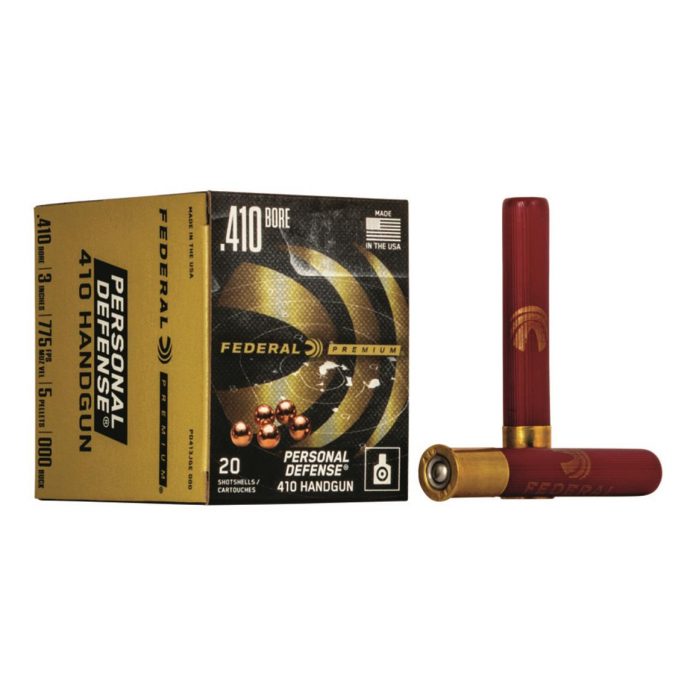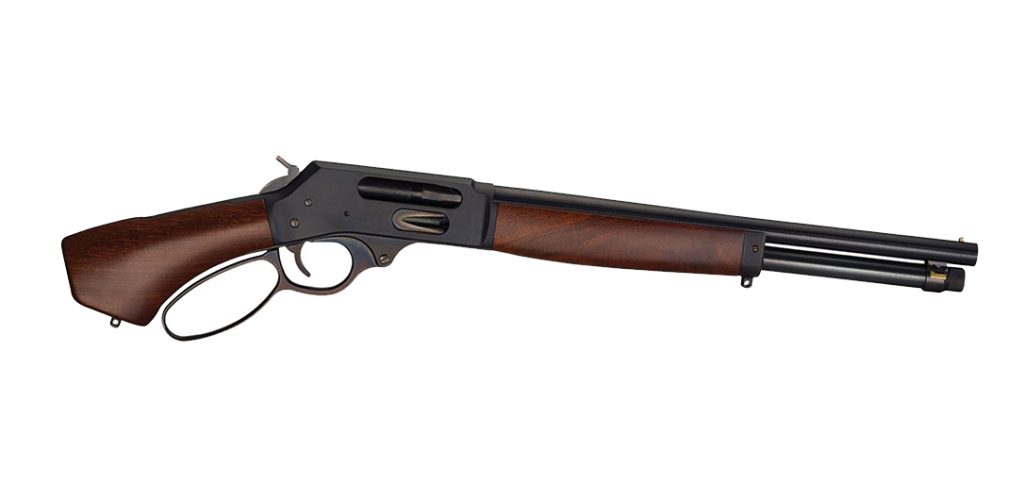
The .410 bore shotgun is well known for being the choice of new shooters, including kids, due to its small size and light recoil. While the 12 gauge dominates the duty and defensive world, the defensive .410 is often touted as a super low recoil option. Admittedly, the buckshot pellets from a .410 will dig deep enough to stop a threat and reach the vitals. In my mind, a PCC or AR in 5.56 would be better than a .410.
When I began thinking more and more about the .410 as a defensive firearm, it dawned on me that I was going about it all wrong. I’ve been thinking about how I use a 12 gauge and applying that to how I’d use a .410. If I changed my train of thought about using a defensive .410, it began to make a little more sense. When we consider the defensive .410, we tout the low recoil nature of the weapon and how easy it is to shoot.
The Stockless Defensive .410
With that idea in mind, maybe the strength of the .410 isn’t in being a traditional shotgun. Its strength is lightweight and low recoil, which makes it a prime candidate for a pistol grip-type configuration. With a 12 gauge, a pistol-grip-only design takes a ton of training and practice to master. The advantage of the 12 gauge is that it is a lighter, easier-to-manage weapon. The downside is harsh recoil.

The .410 is already going to be ultra-light. A full-sized .410 weighs less than six pounds. If we cut off the stock and replace it with a pistol grip, it gets shorter and lighter. Inside the home is often a tight environment, and smaller, lighter guns can be more useful.
Even when you load a .410 with a hot 000 buckshot load, the recoil is laughable, and I describe it as cute. This makes it easy for the vast majority of people to manipulate the weapon and fire repeated shots without issue. With that in mind, what are our defensive .410 options?
Most .410s are field guns used for hunting. However, there are a few solid options out there that would make good defensive guns for those looking for such a thing.
The Mossberg 590 Options
Mossberg produces a couple of ‘tactical’ variants of the .410. They have the HS410, which is a stocked Mossberg 500 with a front pistol grip and ‘spreader’ choke device. They also produce a 590 variant in .410, which holds seven rounds in total. Both are stocked shotguns, but the stock can be removed and replaced with a pistol grip. You have options like the Shockwave grip, and Mossberg makes their own standard vertical grip.

There is also the Mossberg Shockwave, which is a pistol grip-only (PGO) firearm. This is the smallest option and the one I’d be most likely to suggest. A few states prohibit these weapons, but not many. This gun is only a hair over 26 inches long and very easy to manipulate and handle.
The .410 Mossbergs are drilled and tapped, so adding optics isn’t tough. You can toss a red dot on a section of rail for a light, and you’re good to go in terms of a defensive firearm. Mossberg’s pump action designs are classics that are highly reliable and very easy to find. They also tend to be affordable.
The Henry Axe
While expensive, the Henry Axe is another option for a PGO defensive .410. This is a lever-action firearm that, much like the Mossberg Shockwave series, isn’t a shotgun. It’s a firearm and remains over 26 inches long, with a barrel that’s about 16 inches long. It’s lightweight and handy. The lever action is different than the pump design, but it’s admittedly a ton of fun to shoot and handle.

The weapon is lightweight and light recoiling. It’s fun to shoot but also effective. Working the lever might not be as intuitive as the pump at first, but you do get used to it fairly fast. For many, the price will be a turn-off, especially compared to the Shockwave and Mossberg 590, but it remains an option.
The Taurus Judge Home Defender
As much as I disliked the regular Taurus Judge, I’ve become partial to the Home Defender. The longer barrel allows the gun to pattern more like a shotgun when you use three-inch rounds. I think the gap created by the 3-inch cylinder causes the 2.5-inch rounds to pattern erratically. The weapon also works really well with the Hornady Critical Defense .410 load, which I really like.

The benefit of the Home Defender is that it’s smaller than either of the other options. It’s a pistol with a 13-inch barrel. So it’s only a little over 19 inches long. It’s also a double-action action revolver, so you can use it with one hand. Unlike the Axe or Mossbergs, it doesn’t need a second hand to work an action. The capacity is five three-inch rounds, which is the same as the other two options.
The Home Defender is also ready to use .45 Colt if need be. The rails allow for easy optics and light integration as well. It’s really a great option for home defense if you’re stuck on the idea of a defensive .410.
The Defensive .410
I’m not sure if I’m convinced of the capability of the .410 over other options, like braced large-format pistols. However, the .410 options are typically more affordable than a quality braced pistol design. I do think that stripping the gun down to make it light and small lends to its strengths. While I’m not turning to the .410 for home defense, I think the above three options are better choices for a defensive .410 than a full-sized shotgun.



